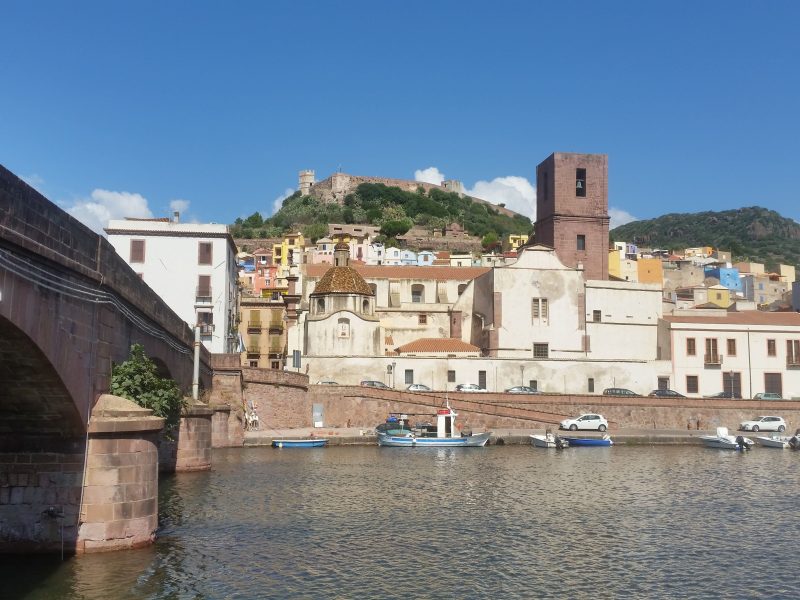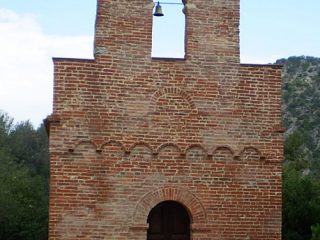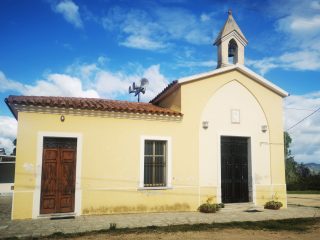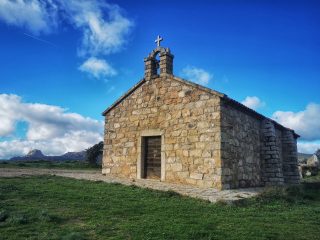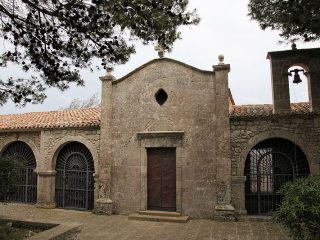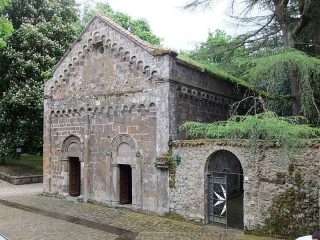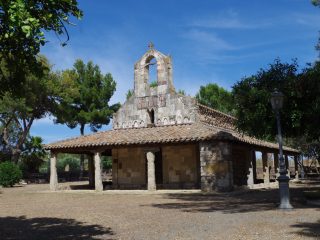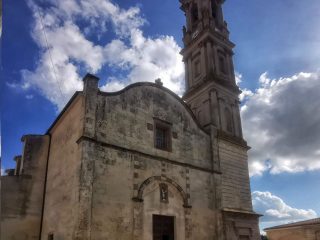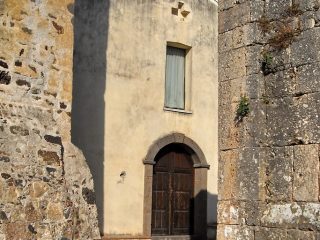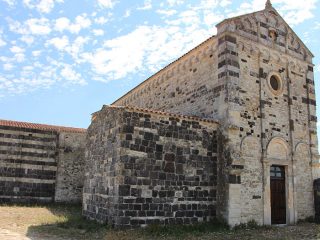The cathedral of Bosa stands at the entrance to the town, along the banks of the Temo and close to the Ponte vecchio. Its imposing size and extensive facade dominate the narrow street it looks out onto.
The current-day building was built on a previous church from the XII century named after Our Lady. The church underwent a series of works and structural changes, like the restoration work at the start of the Nineteenth century carried out by the architect from Bosa, Salvatore Are and the architect Ramelli from Sassari. The Duomo was consecrated in 1809, although the internal decoration work was only completed at the end of the century.
The facade has Baroque aspects, and is entirely plastered except for the structural and decorative elements in red trachyte. The facade vertically divided into three parts by pilasters and half-pilasters, hosts the portal in the central transom; this is dominated by a lavishly decorated cornice with spirals and in the upper order by a large window with the Immaculate Conception.
Inside, we find a large, barrel-vaulted single nave, onto which opens up four side chapels and the transept, in turn divided into 4 smaller chapels.
In the presbytery, rounded off with a semi-circular apse, we find the seventeenth-century high altar surrounded by sculptures of the Immaculate Conception and saints Emilio and Priamo, patron saints of Bosa. The pictorial wall decorations created between 1877 and 1878, are the work of the artist from Parma Emilio Scherer and depict Dante’s Paradiso; in the semi-dome the tempera pictures are arranged into two concentric semicircles: in the lower register is the city of Bosa with the turreted castle and bridge over the Temo and the saints Emilio and Priamo; in the register higher up is a chorus of angelic figures singing and playing instruments on either side of the Immaculate Conception.


